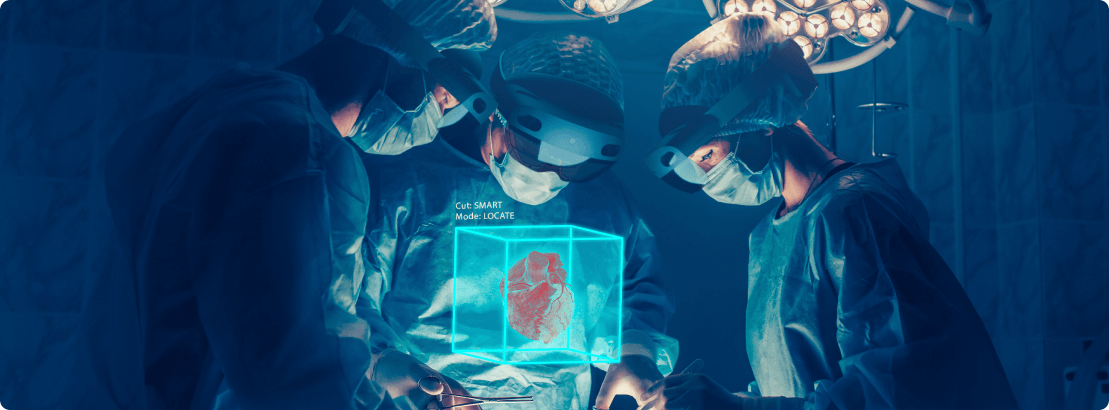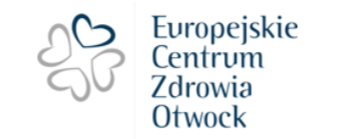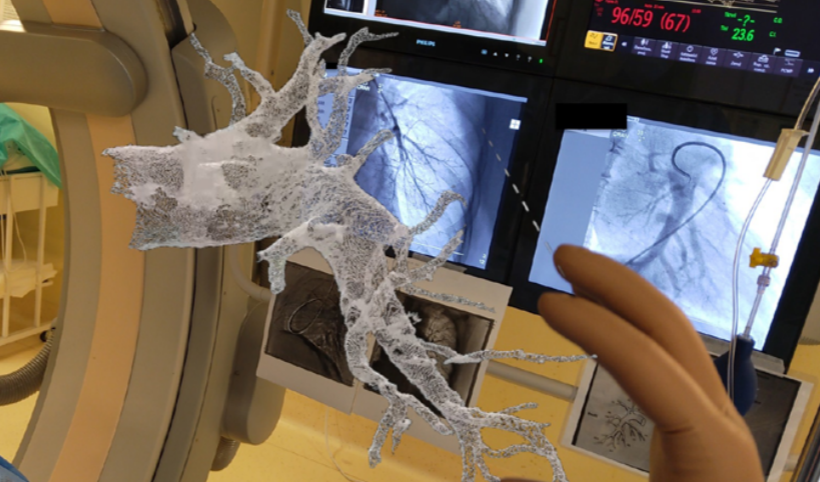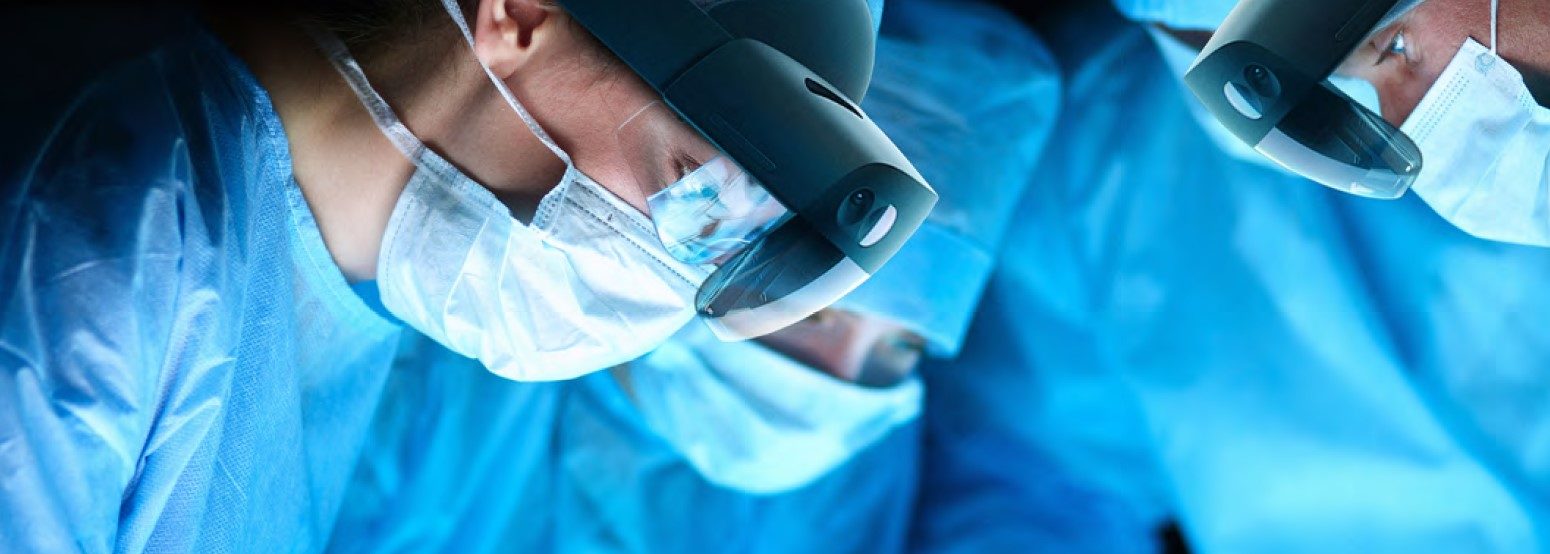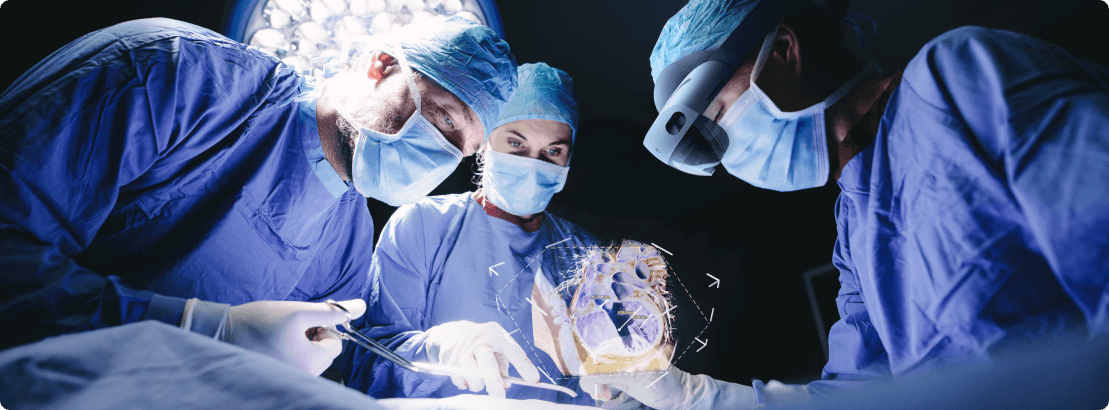CarnaLife Holo supports the planning and performance of medical procedures. With the help of Microsoft’s HoloLens 2, the physician can see in real space a three-dimensional hologram reflecting the structure of the anatomical area. The user can interact with the displayed hologram using hand gestures and voice commands or virtual menu, without breaking the sterility field. The glasses provide an auxiliary interactive 3D screen to be used during procedure planning as well as anywhere in the operating theater at any time during the procedure. Another crucial feature is the possibility to work with Microsoft Teams, that allows to support a physician remotely.
CarnaLife Holo works with hospital PACS (Patient Archiving And Communication System), which makes it possible to visualize the data directly from the hospital IT system, ensuring continuity of the physician’s work. Visualizations of medical images are presented as holograms thanks to Microsoft Hololens 2 mixed reality goggles. The user can interact with the displayed image using gestures and voice commands: rotate it, scale it, move it around, or even go inside the anatomical structure.
Challenge
At one of the finest medical hospital in Poland, ECZ Otwock, professor Marcin Kurzyna
alongside with Dr. Szymon Darocha had to perform a successful angioplasty of a patient with chronic thromboembolic pulmonary hypertension (CTEPH) with the remote support of Dr. Łukasz Kownacki, a radiologist. For such procedure, the operating team work on vessels with a diameter of 2-6 millimeters, the number of which reaches up to 100 in one lung. Finding vessels that qualify for angioplasty and reaching them with a balloon cone is quite a challenge for the operator. Precise diagnostic is greatly required here – which CarnaLife Holo guarantees.
CTEPH is an unfavorable descent of acute pulmonary embolism and consisvts in incomplete dissolution of thremins in the pulmonary arteries. In CTEPH, there is va decrease in blood flow through the lungs, an excessive increase in pressure in the pulmonary artery and the development of right ventricular failure. Symptoms of heart failure include a gradual deterioration in physical performance, shortness of breath with less and less effort, fainting, swelling of the lower extremities and accumulation of fluid in the pleinth and peritoneum. Developing disease can lead to the death of the patient.
Solution
The doctors were able see the hologram showing the structure of the pulmonary arteries. The image displayed as a 3D hologram in HoloLens 2 allowed to orientate in the complex structure of the patients inner organs and gave a boost for finding an optimal route for conducting balloon pulmonary angioplasty procedure. In addition, due to the pandemic, the medical team was supported remotely from Warsaw by a radiologist, Dr. Łukasz Kownacki. The remote access allowed to actually see the operating room, the patient and the whole procedure through the eyes of the operating doctor. The entire medical team wearing Microsoft HoloLens 2 was able not to only observe the procedure but also hear what is going on, communicate with each other and adjust the hologram of the medical data to the needs of the doctor.
Summary
Treatment of the chronic thromboembolic pulmonary hypertension (CTEPH) with the help of CarnaLife Holo is already well tested as 45 procedures were supported by our technology in the ECZ Otwock so far.
The unique combination of intraoperative holographic visualization of the medical structures with the remote connection gives a whole new area of possibilities in the times of COVID-19 pandemics, but we are sure that we will gain from it as a society also when the pandemic is over.
